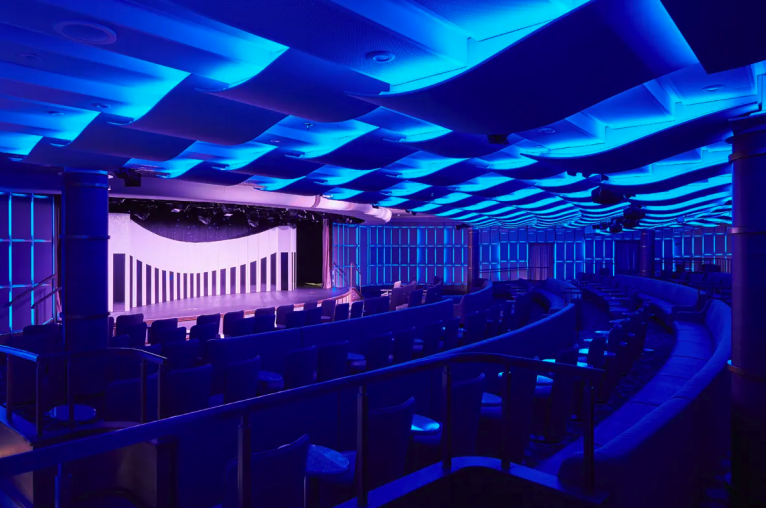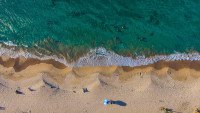Want to add a hotel stay or change your flights?
Just call our team of cruise specialists to help build your dream cruise holiday today!
Prices based on 2 people sharing. Cruise only price does not include flights. Fly-cruise price may vary by chosen UK airport.
(Prices correct as of today’s date, are updated daily, are subject to change and represent genuine availability at time of update).
Cruise only holidays are financially protected by ABTA. Fly cruise holidays are financially protected by Silversea under ATOL number 4681
Please click here to check the essential travel requirements before booking this cruise.
Itinerary




Fort Lauderdale, Florida
Like many southeast Florida neighbors, Fort Lauderdale has long been revitalizing. In a state where gaudy tourist zones often stand aloof from workaday downtowns, Fort Lauderdale exhibits consistency at both ends of the 2-mile Las Olas corridor. The sparkling look results from upgrade... Read More
Fort Lauderdale, Florida
At Sea
At Sea
San Juan (Puerto Rico)
Gustavia
Saint John's
Basseterre, Saint Kitts
Saint Thomas
At Sea
At Sea
Fort Lauderdale, Florida
What's Included with
Silversea
Entertainment throughout the day and evening
Return flights included from a choice of UK airports (fly cruise bookings only)
WiFi included on-board
Gratuities included on-board
24-hour room service
Shuttle service to and from ports and airport where available
Almost 1:1 staff to guest ratio
In-suite bar replenished with your preferences
Complimentary laundry where applicable
Selected wines, beers and spirits on-board
Luxurious, all-suite accommodation
Expedition activities and on-board expert lectures on expedition sailings
Door-to-door transfers from your home (selected sailings only)
Butler service for every suite
Explore Silver Moon








La Dame
Silversea’s signature French restaurant, La Dame is the epitome of fine dining. Featuring the rich, smooth flavours of France, La Dame’s reputation for gastronomic excellence is fully upheld aboard Silver Moon. Expect only the very best; chic contemporary style, vast ocean-view windows, crisp white table linens and impeccable white-gloved silver service with a smile. Decorated with custom-made interior panel compositions created by Lalique, there is no better place to feel the culinary soul of France than in La Dame.
Per guest reservation fee of US$60.
Images are intended as a general reference. Features, materials, finishes and layout may be different than shown.




Shore Excursions









Casino
Enjoy a selection of games at the Silversea Casino for guests 18 and older, or discover new games during your luxury cruise.
Let the fun begin! Channel your inner James Bond and enjoy a flutter at a variety of table games including American Roulette, Blackjack and Ocean Poker as Silver Moon glides silently through the waves. An assortment of multi-game, multi-denominational reel and video slot machines are also available. Prepare yourself for a luxurious and exhilarating experience with every turn of a card and spin of the wheel. Game on!



Zagara Beauty Salon
The Zagara Beauty Spa by Silversea is a sanctuary of pure bliss... Sweeping sea views from the floor-to-ceiling windows, nine treatment rooms, an acupuncture suite, relaxation areas and a dedicated outdoor whirlpool allow delectable
indulgence on board.Relax, rejuvenate and renew all your senses. The Zagara Beauty Spa by Silversea is a sanctuary of pure bliss… Sweeping sea views from the floor-to-ceiling windows, nine treatment rooms, an acupuncture suite, relaxation areas and a dedicated outdoor whirlpool allow delectable indulgence on board. Invigorating therapies including facials, body wraps and massages, plus men’s and women’s saunas and steam rooms are perfect for relaxing before your spa treatment or after your workout.
Images are intended as a general reference. Features, materials, finishes and layout may be different than shown.
Deck 11

- Observation Library
- Spaccanapoli
- Jogging Track
- Silver Suites
- Card Room
- Launderette
- Elevator
Deck 10

- Pool Deck
- Pool Bar
- The Grill
- Whirlpool Area
- Launderette
- Silver Suites
- Elevator
Deck 9

- Panorama Lounge
- Connoisseur's Corner
- Connoisseur's Corner Outdoor Lounge
- Grand Suites
- Owner's Suites
- Silver Suites (x1 Accessible Stateroom)
- Superior Veranda Suites
- Panorama Suites
- Elevator
Deck 8

- Grand Suite
- Superior Veranda Suite
- Deluxe Veranda Suite
- Arts Café
- Boutique
- La Dame
- Launderette
- Elevator
Deck 7

- Superior Veranda Suite
- Deluxe Veranda Suite
- Royal Suite
- La Terraza
- Silver Note
- Casino
- Launderette
- Elevator
Deck 6

- Classic Veranda
- Deluxe Veranda
- Beauty Salon
- Zagara Spa
- Steam Rooms and Saunas
- Aerobics Studio
- Thermal Suite
- Whirlpool
- Fitness Centre
- Launderette
- Elevator
Deck 5

- Reception/Guest Relations
- Shore Concierge
- Dolce Vita
- Venetian Lounge
- Stage
- Future Cruise Manager
- Classic Veranda Suite
- Launderette
- Elevator
Deck 4

- Vista Suites (x3 Accessible Staterooms)
- Atlantide
- Kaiseki
- S.A.L.T Kitchen
- S.A.L.T Bar
- S.A.L.T Lab
- Elevator
Silver Moon Cabins & Suites









Owner's Suite
Other dates available
Meet Our Luxury Cruise Concierge
Our luxury cruise concierge have been on board a vast array of the finest ships at sea and are always happy to share their first-hand experiences to help curate your dream ultra-luxury voyage. From advising you on the best cruise lines and ships to helping you select from a variety of phenomenal destinations and itineraries, your dedicated concierge is on hand to ensure booking your next cruise is as seamless, smooth and tailored to you as possible.















-custom_banner-banner_half.jpg)



















-large_thumb.jpg)





-large_thumb.jpg)